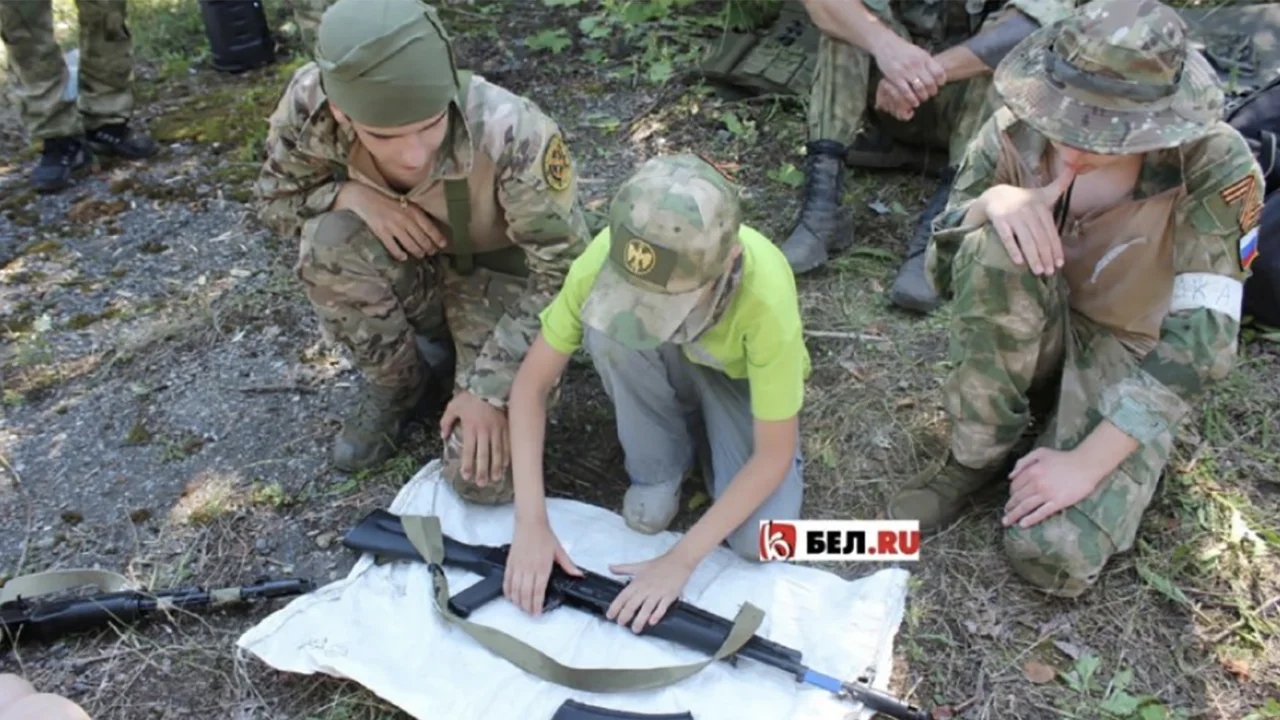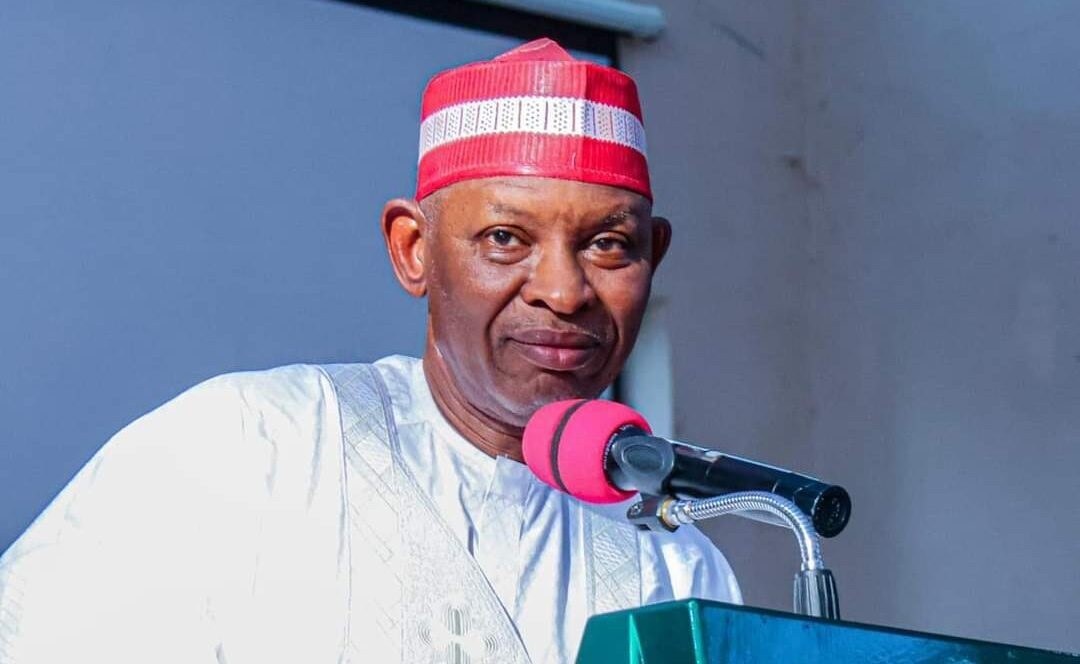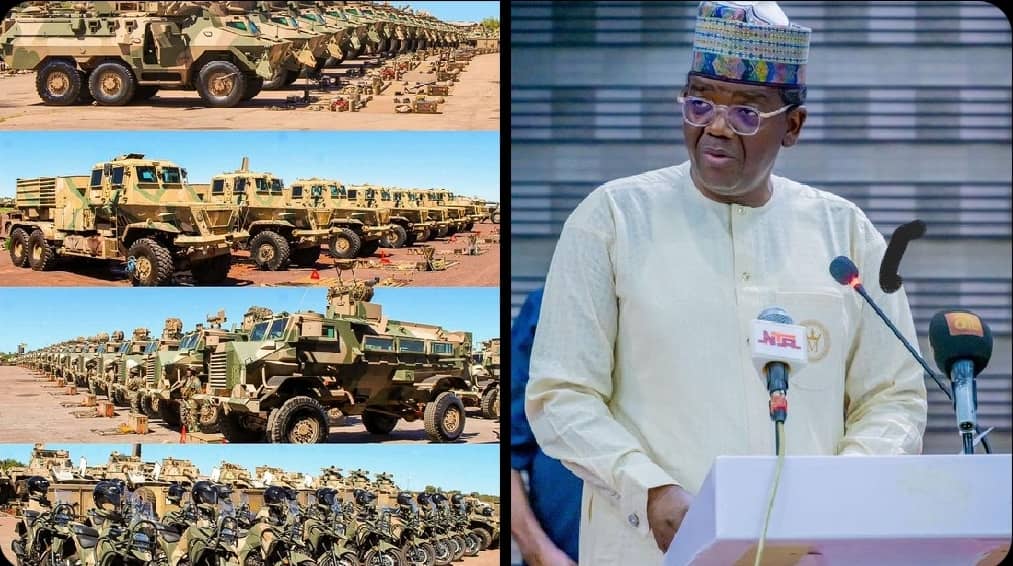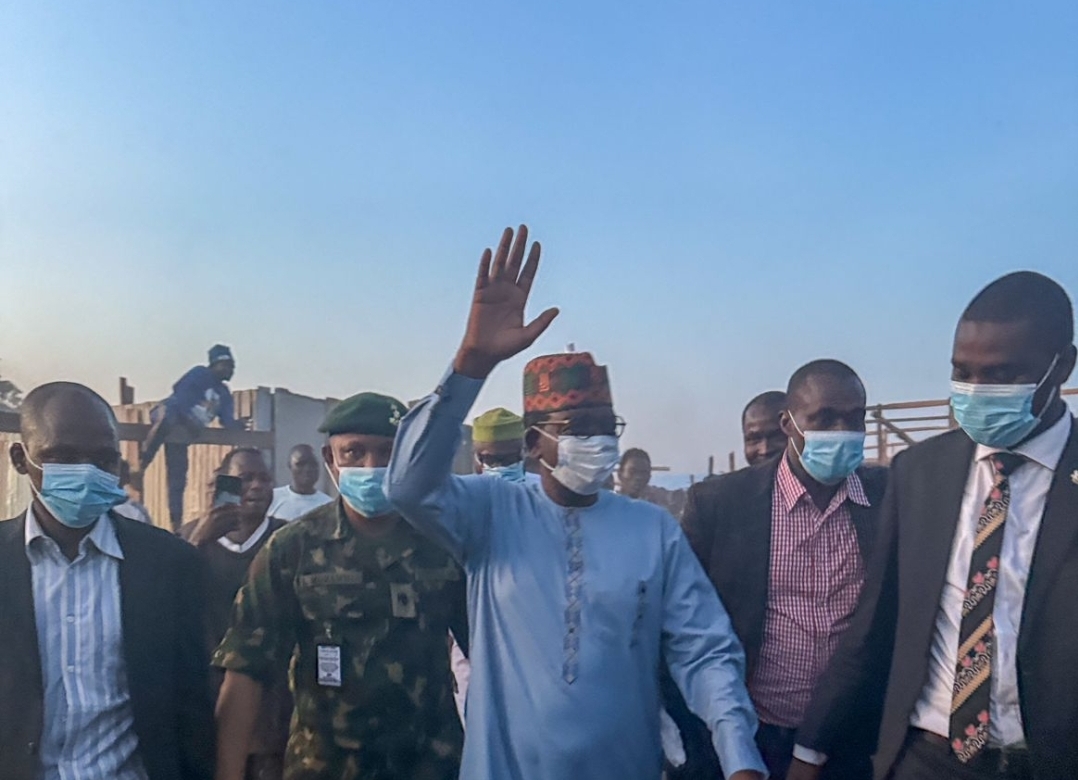Discover how Russian schools are undergoing significant militarization, with children as young as seven receiving military training. Explore the government’s role in this transformation and its implications.

Horizontal Russia/Telegram
The transformation of Russia’s educational landscape from playgrounds to parade grounds has raised concerns and intrigue alike. In schools spanning from the Pacific coast to the Black Sea, a noticeable shift towards militarization is occurring. Even nursery-grade children are donning uniforms and participating in military drills, while older students are being instructed in activities such as trench digging, grenade throwing, and live ammunition firing.
The driving force behind this change isn’t merely a spontaneous surge of patriotic sentiment but rather a government-led initiative emanating from Moscow. The scale of investment is substantial, as Education Minister Sergei Kravtsov reported the existence of approximately 10,000 “military-patriotic” clubs in Russian schools and colleges, engaging a quarter of a million individuals.
These clubs represent only one facet of a broader effort, which includes a comprehensive overhaul of the school curriculum. New mandatory courses emphasize military-patriotic values, and updated history books accentuate Russian military achievements. Furthermore, a recent law signed by President Vladimir Putin introduces a compulsory course named “Fundamentals of Security and Defense of the Motherland.” This initiative extends to excursions to military units, military-sports games, interactions with military personnel and veterans, and even drone-related classes.
A notable aspect of this programme is the teaching of live ammunition use under the supervision of experienced military officers, set to be introduced in 2024. This approach aims to instil in students an appreciation for military aesthetics, rituals, and traditions, as revealed in an Education Ministry document obtained by Russian independent media outlet Important Stories.
Modern history is also being rewritten to suit the government’s narrative. The standard textbook ‘History of Russia’ now features the Crimea Bridge on its cover and includes a new chapter dedicated to recent Ukrainian history. Sections within the textbook are alarmingly titled “Falsification of history,” “Revival of Nazism,” “Ukrainian neo-Nazism,” and “Russia is a country of heroes.” President Putin has repeatedly portrayed the Russian invasion of Ukraine as a “special mission” to protect Russian speakers from “neo-Nazis,” further amplifying a sense of historical grievance among Russian children.
Putin personally champions this effort to infuse patriotism into Russia’s schools. He recently recounted a letter from his grandfather to his father during World War II, emphasizing the indomitable spirit of the Russian people. Such anecdotes reinforce the notion that Russia is invincible, both historically and in the present day.
A thorough investigation by CNN uncovered the startling reality that children as young as seven or eight are undergoing basic military training. In Belgorod, for instance, children adopted call signs like “Sledgehammer” and engaged in exercises involving automatic weapons, machine gun assembly, and obstacle courses. This phenomenon isn’t limited to a single region; similar scenes unfold from Sakhalin in Russia’s Far East to Yeysk on the Sea of Azov, with children often dressed in military uniforms and brandishing images of Russian military heroes.
The Kremlin’s “Special Military Operation” in Ukraine is a recurrent theme in these activities. In Astrakhan, nursery children wear uniforms featuring the letter Z, a symbol of support for the Ukraine war. The Ministry of Defense has extended its outreach to schools with programs like the “Christmas Tree of Wishes,” where children meet military personnel and visit military-related sites.
Russian children are also contributing practically to the war effort. Programs in Vladivostok involve school kids sewing clothing for soldiers, while others in Vladimir produce balaclavas for the military. In Voronezh, students create mobile stoves and trench candles, and in Ussuriysk, teenage girls sew headbands and bandages for the Northern Military District. Letter-writing campaigns and youth military sports games further involve students in the patriotic cause.

Horizontal Russia/Telegram
The ultimate aim, according to the Defense Ministry, is to foster qualities such as mutual assistance, moral strength, and psychological resilience, preparing the younger generation for potential service in the Armed Forces of the Russian Federation. Additionally, military personnel visit schools to share their experiences, often reinforcing pro-war sentiments.
While some educators have been critical of these changes and a few have faced repercussions, public opinion surveys suggest that the majority of parents support this military-patriotic campaign. In fact, according to a survey by state news agency RIA Novosti, 79% of parents endorse showing war-related videos to their children.
In an era where Russia perceives itself as besieged by hostile powers, the message of self-defence, incessantly promulgated by the president and state media, is increasingly finding its way into the country’s educational institutions. The transformation from playgrounds to parade grounds is a testament to the Russian government’s enduring commitment to shaping the minds of the next generation for the challenges it believes lie ahead.





